
One of the great strengths of the New Jersey Branch is its enthusiastic, knowledgeable, patient teachers. Below are brief bios, in alphabetical order.
ELIZABETH BUONOMO
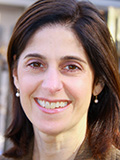
Elizabeth Buonomo has been dancing with the NJ Branch of the RSCDS since 2006. She has studied ballet, modern dance and various movement arts since she was a teenager. She works as a teacher of the Alexander Technique and as a trauma specialist in the field of mental health.
In 2015, after a one-year residency course with Chris and Sue Ronald, Elizabeth received her Part I teaching certification from the RSCDS Scotland. Following several years of mentored teaching and an additional year long course, in 2019 she received her Part II teaching certification. Elizabeth has been teaching in Hohokus since 2015. She also is the group lead for a demonstration team that dances annually during Scottish weekend at the Mohonk House. She especially enjoys working with beginners and sharing with them the beauty and joy of Scottish dance.
MARY GRAY
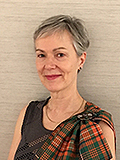
Mary came to the US from Scotland to work as a nurse, and, at some point along the way, she settled in and stayed. She had been introduced to Scottish country dancing early on, in elementary school, and, growing up, she relished taking part in ceilidh dancing, the Scottish tradition at large social events. After arriving in the US, becoming part of the community of Scottish country dancers contributed greatly to a sense of connection and belonging.
Mary started teaching Scottish country dance in 2019 and became a fully RSCDS-certified teacher in 2024. She loves to share the lively jigs and reels and passionate strathspeys with her dancing friends (both locally and around the world) and is always eager to welcome new dancers who are curious about joining in on the fun.
DEBORAH LEARY
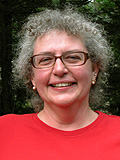
Deborah Leary was born in Manhattan, raised in Rockland County, NY, and moved to New Jersey when she married. Having done folk and square dancing in the past, she first encountered Scottish Country Dancing at the Tenafly (now Ho-Ho-Kus) class in 2005.
She started teaching at Scotia in New York City in 2011, and in addition to teaching in Tenafly and Ho-Ho-Kus, has taught in Westchester and at the NY branch. Deborah has served on the boards of all the local dance groups and is co-chair of the NY Branch’s Pawling Weekend. She has also served on the Education and Training committee of the Society.
Deborah loves Scottish Country Dance and especially loves sharing it by teaching. She works in a local public library and is an avid reader and knitter.
PETER PRICE
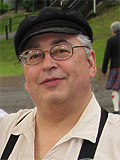
Peter Price was born in Manhattan and raised in New Haven, CT. He apprenticed as an English Country Dance teacher under Fried deMetz Herman, and has also danced and called contra dancing. He started Scottish Country Dancing in New Haven 1976.
Peter taught in Connecticut at the New Haven branch and taught the Wilton, CT class for 10 years; he started teaching in NJ when he moved here in 2011. He got his RSCDS preliminary certificate in 1979, got sidetracked for a few years, and finished his Part 2 in 2015. You can read his blog about Scottish Country Dancing at the Kilts and Ghillies Blogspot.
Peter overhauled jet engines for a living until GE bought his company and moved the jobs to Brazil. Favorite non-dance activities are sailing, swimming, and pretty much anything else water-related.
KEN SAUNDERS
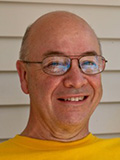
Ken Saunders is from the Cotswolds area in England. He is married with two adult children, their spouses, and four grandchildren.
Ken retired early from a career in Europe and the USA spanning laundry detergent formulation, consumer packaged goods marketing, biotech marketing, and customer strategy consulting and is now a ski instructor and dance instructor.
He started dancing in San Francisco in 2010 and joined the NJ branch of the RSCDS in 2012. He began formal teacher training in 2014; in 2015 he received his Part 1 teaching certification from the RSCDS and also attended the RSCDS sponsored Basic Teaching Skills Course focused on introducing new dancers to SCD.
Following three years of mentored teaching Ken undertook additional training in 2018 and in 2019, received part II or “full” teaching certification. Ken works to stay current with best teaching practices through his involvement with the Scottish Country Dance Teachers’ Association (Canada) - TAC.
ABOUT THE RSCDS TEACHER TRAINING PROGRAM
The teacher training program administered by the Royal Scottish Country Dance Society in Edinburgh ensures that RSCDS certified teachers all over the world meet the same high standards and teach to the same curriculum.
The certificate is awarded in 2 parts: Part 1 includes a written exam on the history or the RSCDS, dance techniques and formations, and dance music; and an evaluation of dancing proficiency and teaching techniques. Part 2 concentrates on further improvement of teaching skills. (In the past these were called Preliminary and Full Certification.)
Information about RSCDS Teaching Certificates is posted on the RSCDS website.

